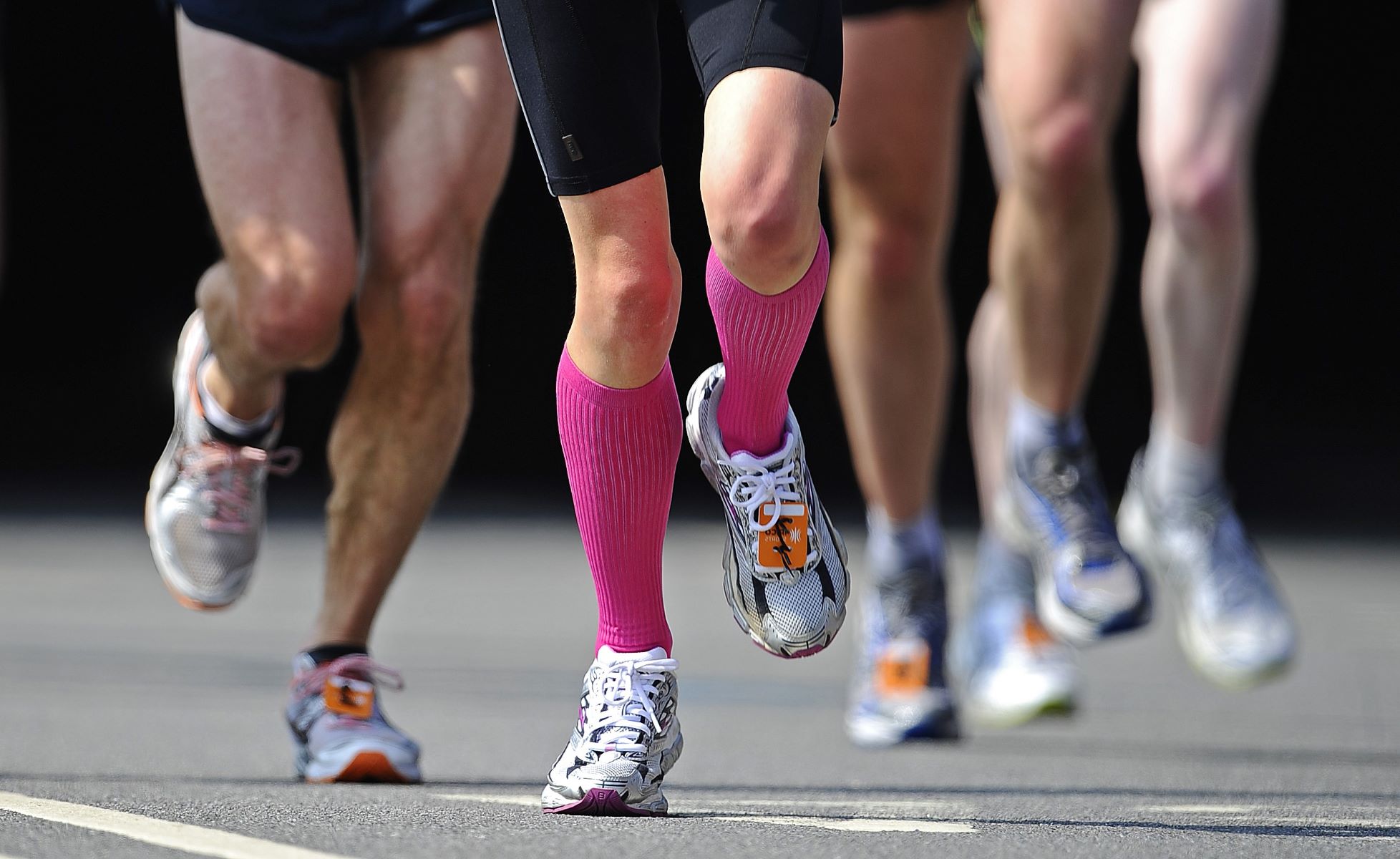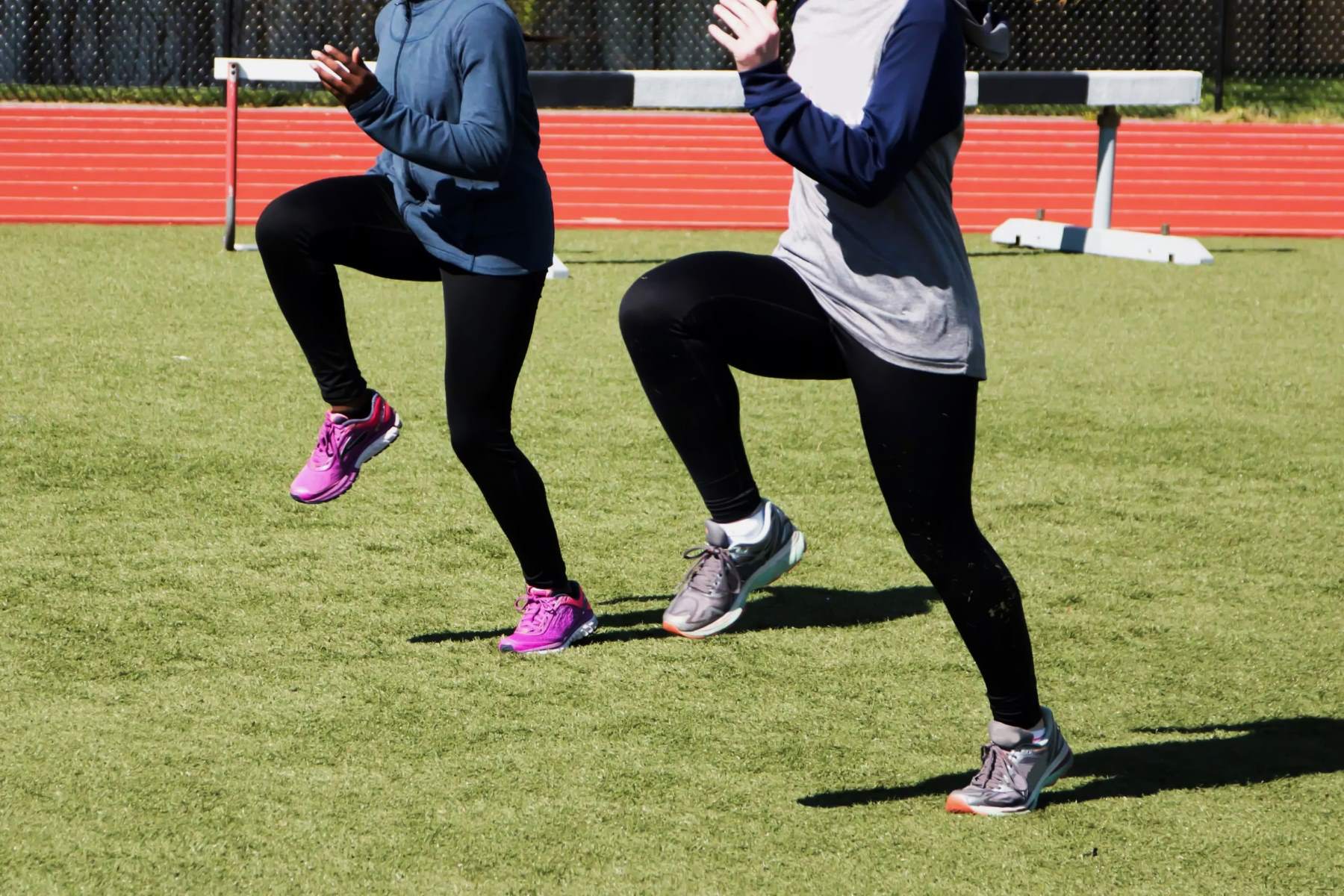Home>Training & Techniques>Training Plans>Is It Possible For This Workout To Forecast Your Half-marathon Time?


Training Plans
Is It Possible For This Workout To Forecast Your Half-marathon Time?
Published: February 29, 2024
Discover how our training plans can help forecast your half-marathon time with this innovative workout. Reach your goals with personalized training.
(Many of the links in this article redirect to a specific reviewed product. Your purchase of these products through affiliate links helps to generate commission for Therunningadvisor.com, at no extra cost. Learn more)
Table of Contents
Understanding the Science Behind the Workout
The workout in question is designed to provide valuable insights into an individual's potential half-marathon time. At its core, this workout leverages the principles of lactate threshold and aerobic capacity to gauge an athlete's current fitness level and project their future performance.
Lactate threshold, often referred to as the anaerobic threshold, represents the point at which the body's production of lactate surpasses its clearance, leading to a rapid increase in blood lactate levels. This physiological phenomenon is a key determinant of an athlete's endurance and performance capacity. By pushing the body to operate near its lactate threshold during the workout, individuals can gain a clearer understanding of their current fitness level and the pace they can sustain over a half-marathon distance.
Furthermore, the workout also targets aerobic capacity, which is a measure of the body's ability to utilize oxygen during exercise. By incorporating intervals and sustained efforts at varying intensities, the workout challenges the cardiovascular system and helps individuals improve their oxygen uptake, ultimately enhancing their endurance and performance.
The science behind this workout lies in its ability to stress the body's energy systems, prompting physiological adaptations that are crucial for half-marathon success. The combination of lactate threshold and aerobic capacity training not only enhances an athlete's ability to sustain a challenging pace but also improves their overall efficiency and resilience during prolonged efforts.
In essence, this workout serves as a powerful diagnostic tool, shedding light on an athlete's current physiological state and providing valuable data for predicting their half-marathon performance. By understanding the underlying science and physiological principles at play, individuals can harness the workout's insights to optimize their training and strive for peak race-day performance.
Read more: Determining An Optimal Half Marathon Time
How to Implement the Workout into Your Training Plan
Incorporating the workout into your training plan requires a strategic approach to maximize its benefits and seamlessly integrate it with your existing regimen. Here's a comprehensive guide on how to effectively implement this workout into your training plan:
1. Schedule Appropriately
Integrate the workout into your training plan at a phase where you are focused on building endurance and improving lactate threshold. This could be during the mid-phase of your training cycle, typically several weeks before your half-marathon race. By strategically placing the workout at this juncture, you can capitalize on the physiological adaptations it induces to enhance your race-day performance.
2. Understand the Workout Structure
Familiarize yourself with the specific structure of the workout, which typically involves a combination of sustained efforts at or near lactate threshold pace, interspersed with intervals at varying intensities. This could entail sustained tempo runs, threshold intervals, or progression runs designed to challenge your aerobic capacity and lactate threshold.
3. Tailor Intensity and Duration
Customize the workout to align with your current fitness level and training goals. Adjust the intensity and duration of the intervals and sustained efforts based on your lactate threshold pace and aerobic capacity. This personalized approach ensures that the workout effectively targets your physiological systems while minimizing the risk of overexertion.
4. Integrate Recovery Periods
Incorporate adequate recovery periods between intervals and sustained efforts to facilitate physiological adaptations and prevent overtraining. Balancing intensity with recovery is crucial for optimizing the workout's impact on your aerobic capacity and lactate threshold, ultimately enhancing your endurance and race performance.
5. Monitor Progress and Adapt
Regularly assess your performance during the workout to gauge improvements in lactate threshold and aerobic capacity. Use this feedback to adapt and refine the workout within your training plan, ensuring that it continues to challenge your physiological limits and drive progress leading up to your half-marathon race.
By strategically integrating this workout into your training plan and customizing it to suit your individual needs, you can harness its potential to enhance your lactate threshold, aerobic capacity, and overall half-marathon performance. This proactive approach empowers you to leverage the workout as a valuable tool in your training arsenal, paving the way for a successful and fulfilling race experience.
Analyzing the Accuracy of the Workout's Predictions
The accuracy of the workout's predictions hinges on its ability to provide a reliable estimation of an individual's half-marathon time based on their performance during the training session. To assess the validity of these predictions, it is essential to scrutinize the correlation between the workout outcomes and actual race performances.
One approach to analyzing the accuracy of the workout's predictions involves collecting comprehensive data from athletes who have undergone the training session and subsequently participated in a half-marathon. By comparing the projected race times derived from the workout with the actual race results, it becomes possible to evaluate the alignment between the predicted and realized performances.
Furthermore, statistical analysis plays a pivotal role in assessing the accuracy of the workout's predictions. Utilizing regression models and correlation coefficients, it is feasible to quantify the degree of association between the workout-derived estimations and the athletes' actual half-marathon times. This rigorous statistical scrutiny provides valuable insights into the predictive power of the workout and its capacity to forecast race performances with precision.
Moreover, conducting a longitudinal analysis by tracking athletes' progress over multiple training cycles and half-marathon events can offer a comprehensive perspective on the workout's predictive accuracy. By observing trends in the consistency and reliability of the predictions across various individuals and race scenarios, it becomes feasible to discern the workout's efficacy in forecasting half-marathon times under diverse circumstances.
Additionally, considering the influence of external factors such as weather conditions, course elevation, and race-day variables is crucial when evaluating the accuracy of the workout's predictions. By accounting for these external elements and their potential impact on race performances, a more nuanced assessment of the workout's predictive capabilities can be attained, enhancing the overall understanding of its reliability.
In essence, analyzing the accuracy of the workout's predictions necessitates a multifaceted approach encompassing empirical data analysis, statistical validation, longitudinal observations, and the consideration of external variables. By employing a comprehensive evaluation framework, it becomes feasible to gain a nuanced understanding of the workout's predictive accuracy and its potential as a valuable tool for athletes striving to gauge their half-marathon performance.
Factors to Consider When Using the Workout for Time Forecasting
When leveraging the workout for time forecasting, several critical factors warrant careful consideration to ensure the accuracy and reliability of the predictions. These factors encompass physiological, environmental, and individual-specific elements that collectively influence an athlete's performance and must be factored into the forecasting process.
1. Individual Variability
Every athlete possesses a unique physiological makeup, training history, and response to specific workout stimuli. It is imperative to recognize the inherent variability among individuals, as this directly impacts the predictive capacity of the workout. Factors such as genetic predispositions, previous training adaptations, and inherent strengths and weaknesses can significantly influence an athlete's performance, necessitating a personalized approach to time forecasting.
2. Training Context
The athlete's training context, including the overall training volume, intensity distribution, and periodization, plays a pivotal role in shaping their physiological readiness for the half-marathon. The workout's predictive accuracy is contingent upon aligning with the athlete's training context, ensuring that it reflects their specific conditioning and preparedness for the race.
3. External Variables
External variables, such as weather conditions, course elevation, and race-day circumstances, exert a substantial impact on race performances. When utilizing the workout for time forecasting, it is essential to acknowledge the influence of these external factors and their potential to deviate from the predicted race times. By integrating these variables into the forecasting process, a more comprehensive and realistic estimation of the athlete's half-marathon performance can be attained.
4. Physiological Adaptations
The workout's predictive capacity is intricately linked to an athlete's physiological adaptations over time. As athletes undergo training and physiological enhancements, their lactate threshold, aerobic capacity, and overall endurance evolve, thereby necessitating periodic reassessment and recalibration of the forecasting model. Acknowledging the dynamic nature of physiological adaptations is crucial for maintaining the accuracy of time forecasting using the workout.
5. Race-Specific Considerations
Each half-marathon event presents unique characteristics, including course profile, climate, and competitive dynamics. Integrating race-specific considerations into the forecasting process enables a more tailored and precise estimation of the athlete's performance. By accounting for the idiosyncrasies of the target race, the workout's predictive capacity can be fine-tuned to align with the specific demands and challenges that the athlete will encounter.
In essence, when utilizing the workout for time forecasting, a comprehensive understanding of the aforementioned factors is indispensable for optimizing the accuracy and relevance of the predictions. By embracing a holistic approach that encompasses individual variability, training context, external variables, physiological adaptations, and race-specific considerations, athletes can harness the workout as a potent tool for forecasting their half-marathon performance with enhanced precision and insight.
Tips for Maximizing the Effectiveness of the Workout
-
Consistent Implementation: Regularly incorporating the workout into your training plan is essential for reaping its full benefits. Consistency fosters physiological adaptations, enhancing your lactate threshold and aerobic capacity over time. Aim to integrate the workout into your training regimen at strategic intervals, ensuring a sustained focus on improving your half-marathon performance.
-
Progressive Overload: Gradually increasing the intensity and duration of the workout as your fitness progresses is pivotal for continual improvement. By implementing a progressive overload approach, you challenge your physiological limits, prompting adaptations that elevate your endurance and race readiness. Strive to incrementally push your boundaries while maintaining a balanced and sustainable training trajectory.
-
Individualized Tailoring: Customizing the workout to align with your specific fitness level, training goals, and race aspirations is paramount. Tailoring the workout to suit your unique physiological profile ensures that it effectively targets your areas of improvement, fostering personalized advancements in lactate threshold and aerobic capacity. Embrace an individualized approach that optimally aligns with your training needs and performance objectives.
-
Strategic Recovery: Integrating adequate recovery periods following the workout sessions is crucial for optimizing its effectiveness. Balancing challenging training stimuli with sufficient recovery allows for physiological adaptations to take place, enhancing your body's ability to handle the demands of the half-marathon. Embrace strategic recovery as an integral component of the workout's impact on your overall performance.
-
Performance Monitoring: Regularly monitoring your performance during the workout provides valuable insights into your progress and areas for refinement. Utilize performance data to gauge improvements in lactate threshold, aerobic capacity, and overall race readiness. This proactive approach empowers you to make informed adjustments, ensuring that the workout remains aligned with your evolving physiological and performance needs.
-
Holistic Integration: Integrate the workout into a holistic training framework that encompasses diverse elements of endurance, speed, and race-specific preparation. By synergistically incorporating the workout with complementary training components, such as long runs, speed workouts, and race simulations, you cultivate a comprehensive foundation for half-marathon success. Embrace a holistic approach that harmonizes the workout with your broader training strategy.
-
Race Simulation: Incorporating race simulation elements within the workout enables you to mentally and physically prepare for the demands of the half-marathon. By integrating segments that mirror race conditions, such as sustained efforts at goal race pace, you acclimate your body and mind to the challenges of the actual event. Embrace race simulation as a means to fortify your race-day readiness.
-
Adaptation and Refinement: Continuously adapt and refine the workout based on your evolving fitness and race goals. Embrace a dynamic approach that accommodates your progress, allowing the workout to evolve in tandem with your physiological adaptations. By remaining receptive to adjustments, you ensure that the workout consistently aligns with your current training needs and performance aspirations.
By embracing these tips, athletes can maximize the effectiveness of the workout, leveraging its potential to enhance lactate threshold, aerobic capacity, and overall half-marathon performance. This proactive and tailored approach empowers individuals to harness the workout as a potent tool in their training arsenal, fostering continual progress and race-day success.













